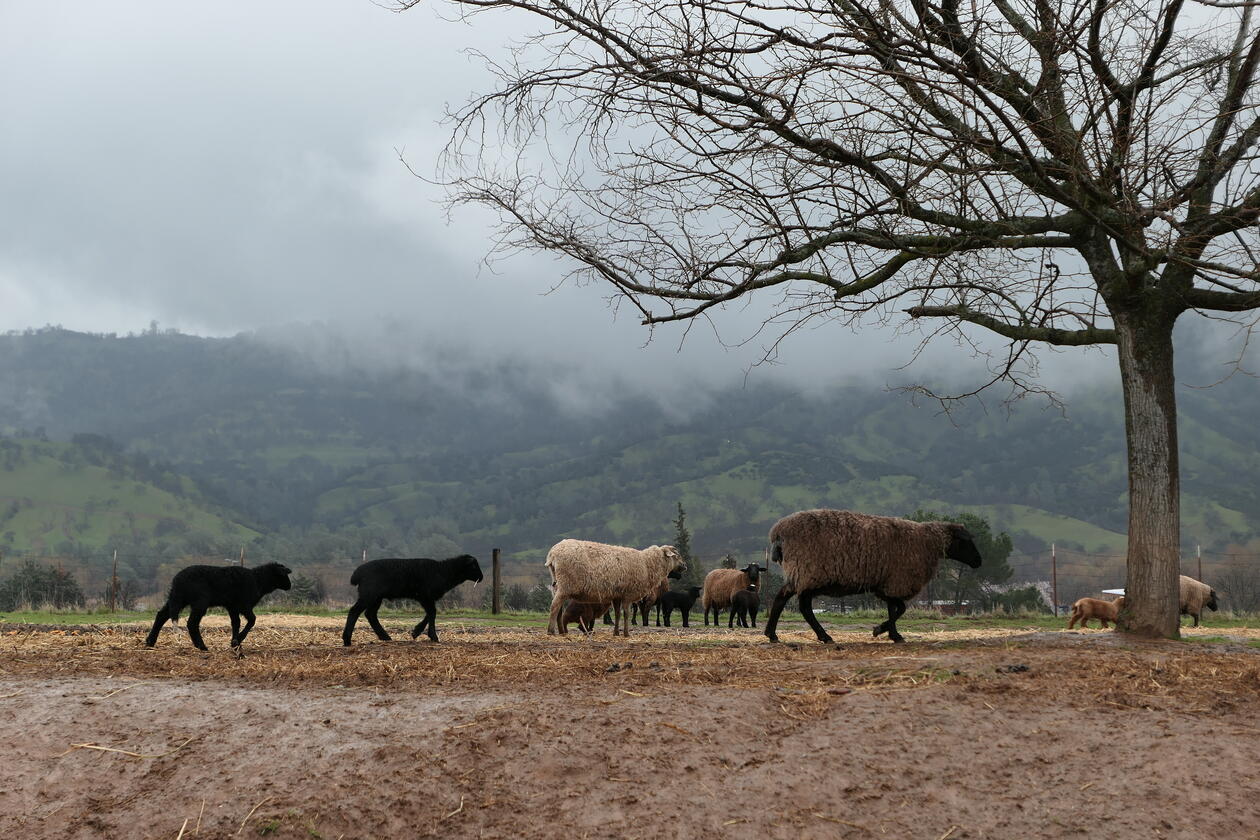Examining impacts and responses to COVID-19 pandemic in the agri-food sector in USA, China and Norway
This paper, led by Inger Måren and published in Frontiers in Sustainable Food Systems in June 2022, offers a unique insight into the global nature of the COVID-19 pandemic by examining impacts and responses in the small farm sector within three very distinct contexts: the United States/California, EU/Norway, and China.

Hovedinnhold
In the paper, the authors reviewed policy adaptations to understand how governments, the private sector, non-profit organizations, and communities “stepped up” to provide emergency relief and recovery support for farmers, support that was instrumental in preventing more devastating impacts in all three countries. Drawing from in-depth interviews with farmers and government and non-governmental support organizations, they mapped the vulnerability and resiliency of selected farmers to shocks that severely disrupted traditional supply chains during the COVID-19 pandemic.
The authors found commonalities for several of the adaptive responses despite very distinct socio-political systems. Most importantly,
- Sharp rise in e-commerce;
- Increased direct and diversified markets to consumers;
- Changes in social norms toward collaboration and re-kindling of community traditions;
- Crucial designation of farmers and farmworkers as “essential”;
- Crucial government emergency and recovery support; and
- Complementary training and logistics support by NGOs and/or the private sector to farmers where government support was lacking.
Across sites a constellation of actors worked in concert to help farmers and the agri-food sector weather the pandemic storm. In China, the major role of Alibaba’s digital platform linking thousands of “scattered” farmers with excess produce to buyers throughout the country was important. In Norway, direct markets and the Norwegian Farmers and Smallholders Association have been the driving force behind the fast growth of REKO-rings, digitally connecting small, diversified farmers directly with individual consumers. And in California, diversified, small and mid-size farms were able to survive and even prosper during the pandemic because of their “nimbleness” in quickly pivoting to direct marketing as demand increased.
Although government policies were enormously important in all three cases in preventing more severe or long-lasting impacts on farmers, such as loss of land and equipment, benefits were hard to access for socially disadvantaged/non-English speaking farmers in the U.S., small, diversified family farmers in Norway, and “scattered farmers” unassociated with government-backed enterprises in China. The necessity of community solidarity together with institutional support for surviving a health crisis affecting the entire planet became apparent. The big question remains as to whether certain positive trends and policies will endure after the pandemic is over. Below we summarize major findings and suggestions for building a more socially, ecologically and economically resilient agri-food system post- pandemic, integrating data from the three sites.
Diversify Markets
With the pandemic, markets were hit directly, so farmers able to pivot quickly to direct marketing did relatively well, and farmers with a diversity of fresh and processed products to offer sheltering-at-home consumers did even better. In addition, several farmers benefited from a break in perceived unfair competition with imported food, especially from Mexico in the case of California, and other EU countries in the case of Norway. Even farms in China benefited from closed regional borders adding a new source of local tourism income.
Retain Positive Changes in Social Norms
The pandemic put a spotlight on peoples’ essential connections to food and food providers while lockdown restrictions increased demand for locally produced foods that were perceived as safer and more readily available. Farmers involved in direct marketing perceive this as a positive change in social norms that they hope will continue post- pandemic.
Prioritize Socially Disadvantaged and Small to Midsize Farmers
The findings indicate inequities in impacts, leaning more negative than positive for immigrant farmers (California) and “scattered” subsistence farmers (China). In Norway, the progressive social contract between citizens and their government is nonetheless focused on large operations, and consumers rely heavily on cheaper imported food. In the US, negative impacts were somewhat minimized where NGOs and selected government programs actively targeted socially disadvantaged farmers.
Aim for a more Resilient Agri-Food System
The European Union/Norway and China had a unified rapid response to the pandemic to prevent its spread and worsening health and economic impacts, whereas the US’ federal response was delayed leaving much of the heavy lifting to individual states with heavy costs in lives and economic harm. However, in the US, and especially California, the remarkable non-governmental response to the market and supply disruptions—both by farmers and support organizations, reduced harm to small commercial farms and socially disadvantaged farmers and farmworkers.
Postscript:
The paper analysis is based on field work conducted at the early stage of the COVID outbreak. The situation has shifted and worsened in China until today. COVID continues to disrupt supply chains in the US and Europe.
Citation:
Måren I.E., Wiig, H., McNeal K., Wang S., Zu S., Cao R., Fürst K. & Marsh R. 2022. Diversified Farming Systems: Impacts and Adaptive Responses to the COVID-19 Pandemic. Frontiers in Sustainable Food Systems. https://doi.org/10.3389/fsufs.2022.887707

